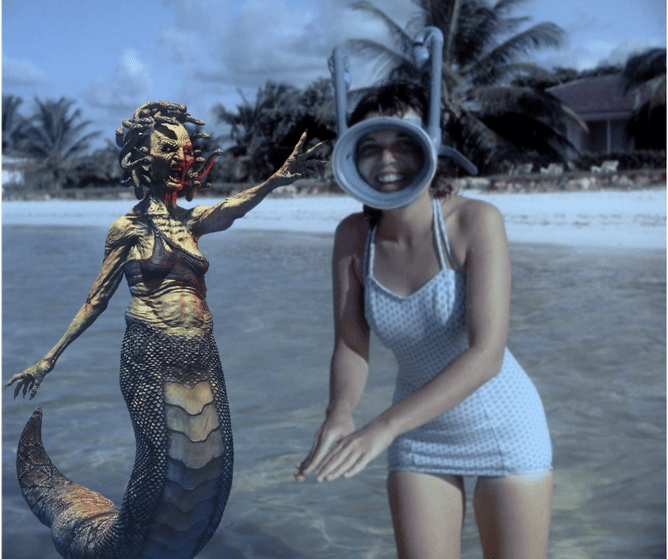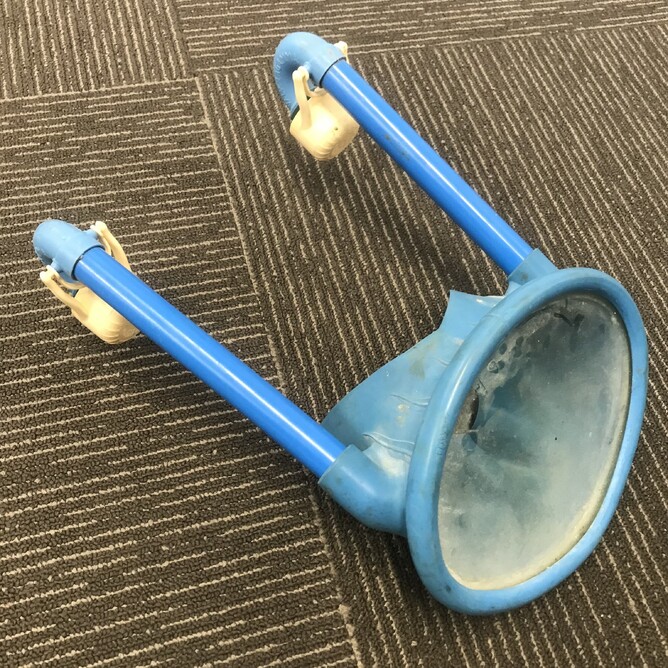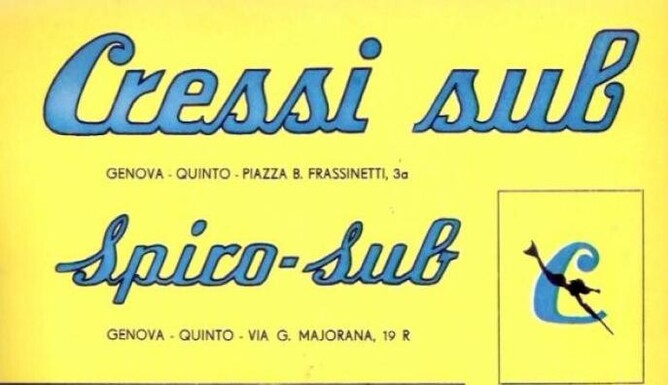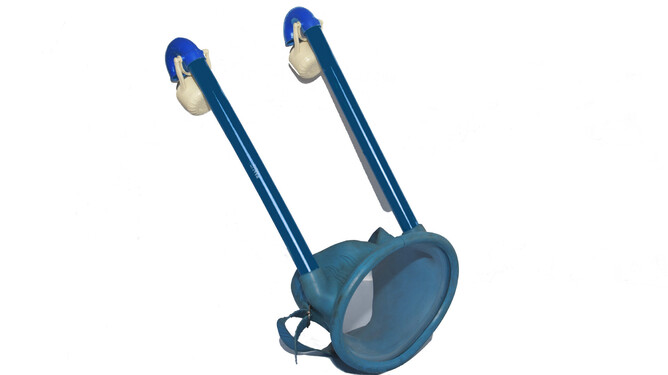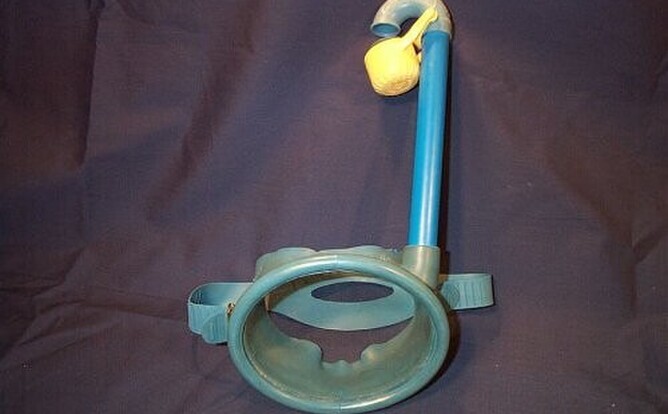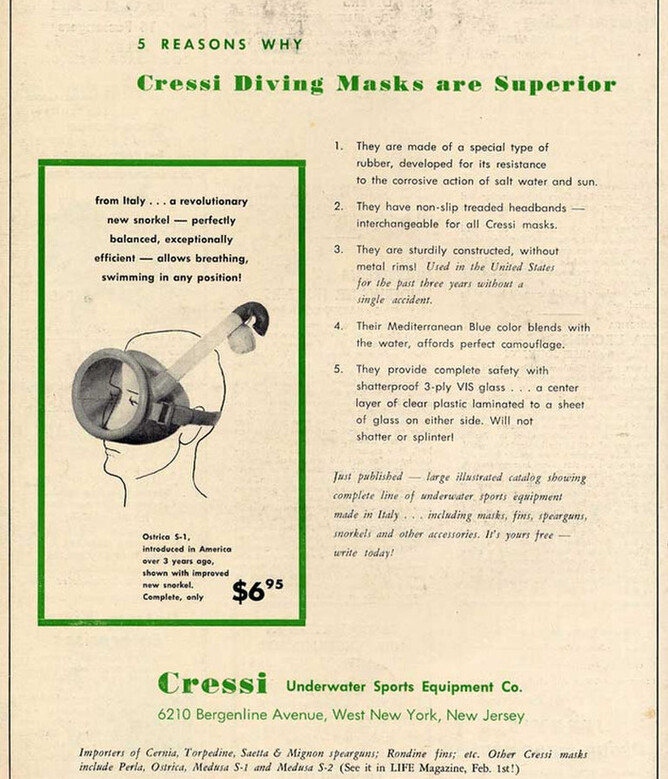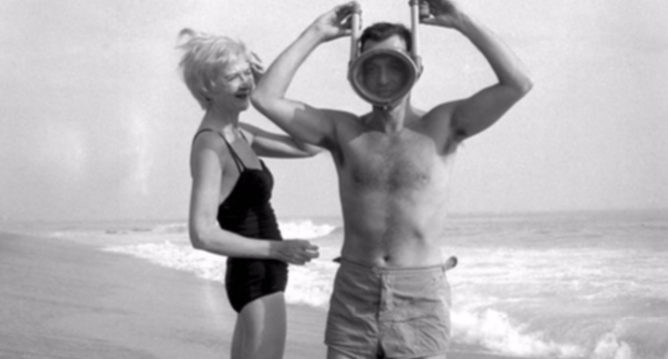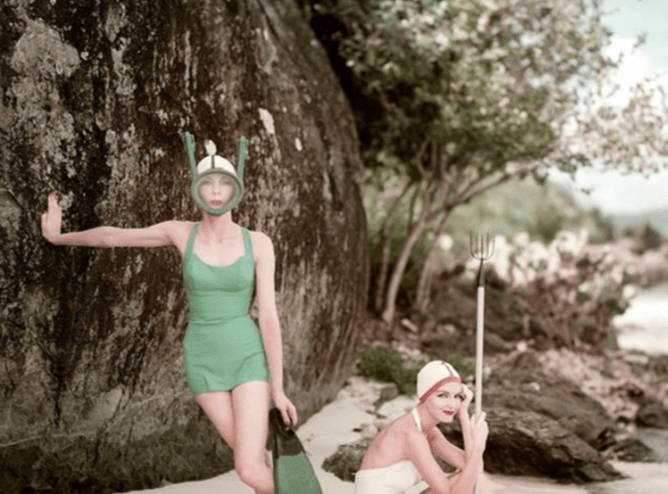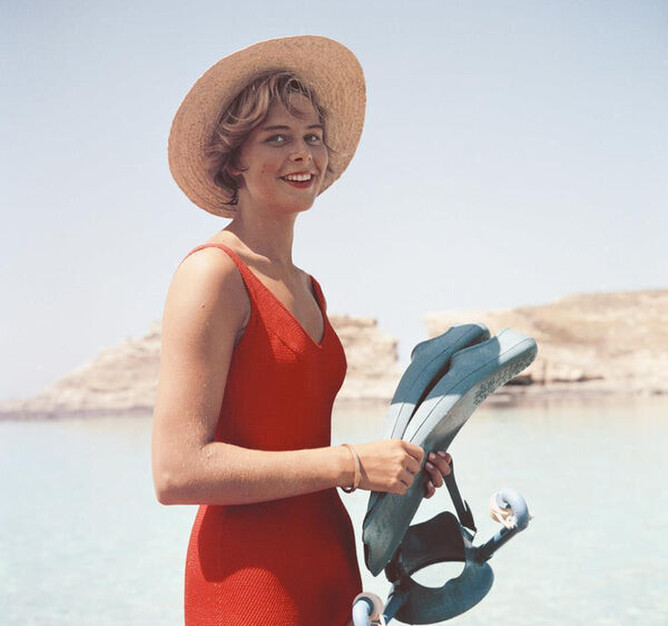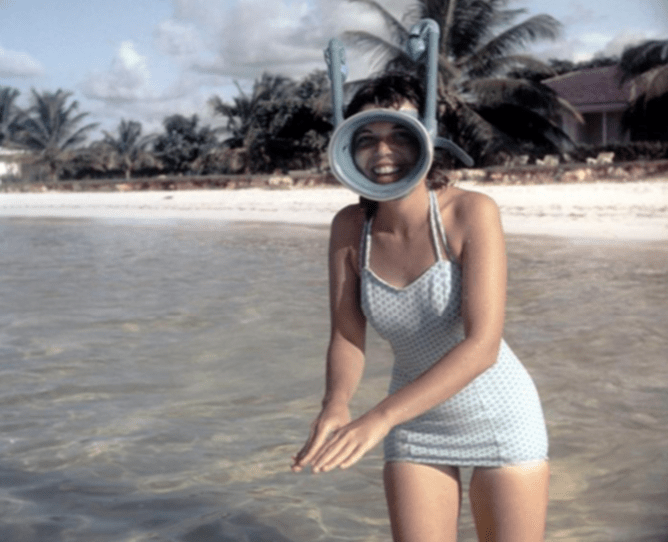The Cressi Medusa G2 Snorkel-Mask
It's amazing how a late night purchase online can possibly spawn such a fascinating story. We recently purchased a rather old and strange looking snorkel mask for our vintage SCUBA equipment museum we are curating. It was a cheap purchase from an elderly man and we knew nothing about the item until it arrived via a courier.
We excitedly unwrapped the box and pulled out a very old, very dusty, very smelly mask and immediately spotted a brand name embossed onto the side - CRESSI GENOVA MADE IT ITALY. We now had a manufacturers name so investigating this item was about to become a little easier but we still didn't know it product name or age.
After conducting some online research, we eventually posted a photograph (shown below) to an online forum dedicated to vintage equipment nerds (we are happy to profess that we are also vintage SCUBA equipment nerds). The response we received from the post was outstanding, gaining many "likes", comments, anecdotes and slowly but surely its fascinating story began to unfold.
Aotearoa Dive's mysterious snorkel mask
Initial comments the post received were stabs at its year of manufacture (as this was the question we asked);
"Early '60s", "Late ‘50s", "probably very late 50's early or mid 60's", "Late 60’s", "mid 1950’s".
Quite a broad manufacture date was suggested of but we were getting closer, basically we knew it was old. Finally a knowledgable member (thank you David) announced - "G2" or to be more specific the Cressi Medusa G2. We had finally found a name!
As the comments continued to roll in, so did the anecdotes and stories from owners and users of the Medusa and they alone tell a story and paint a picture of those early diving and snorkelling pioneers;
"Sea hunt", "I saw one of these in 1955", "Killed several before being pulled off shelves", "It was my Christmas gift here in Argentina in 1960", "they tended to load up with C02", "Laguna Beach during the mid-1950s. Good way to drown", "I remember those days! Dangerous!", "I had one when I was About 5 years old. 1958 i think", "I had one of these", "I have wanted one of these for years", "Had one! My uncle used to say if he had a down moment he just had to picture me wearing it and he’d feel better instantly!".
Cressi Sub history
Before the beginning of the Second World War, Egidio Cressi tried out the first equipment developed for underwater hunting. He then started to handcraft his own equipment after his normal working hours. In complete conflict with his bank, who suggested that he should transfer to another location, Egidio refused as he would have lost all contact with the sea and with his group of friends and client divers. He resigned from his normal place of work and set up the company Cressi.
Ferraro & Egidio Cressi
Cressi Sub is one of the longest standing scuba equipment factories in the world. Cressi-sub was founded in 1946 by brothers Egidio and Nanni Cressi, two men who loved the sea. These two pioneers actively participated in the evolution of the world of scuba diving and invented the first series-manufactured mask along with numerous other scuba devices and accessories.
In the beginning, the company was small and products were pratically made hand by the two brothers. The company churned out one product after another, evolving and improving over the years, unbeknown to them at the time that their products would make modern scuba diving history. During those early days, the sea was feared, and scuba divers were considered "fool-hearthed but adventuresome souls". Neverthless, all Cressi's equipment was personally tested by Egidio and Nanni, who made changes based on their "in the field" tests out at sea. Underwater activities were at their very beginning. Cressi were indeed pioneering and practiced enthusiastically with no knowledge of the fundamental physics and physiology principles.
In 1947, Egidio was introduced to Luigi Ferraro who, thanks to his experience as a diver working for the Navy and thanks to his skills as an inventor, was employed to work for the emerging company. Ferraro significantly helped the company to make a qualitative leap, which later was substantiated by the creation of the Rondine fins and of the Pinocchio mask. At that time, Luigi Ferraro was employed as project manager at Cressi. Luigi later went on to found Techni-sub, another one of the pioneering dive equipment manufacturers. Also, at this same time, a former officer in the Austrian army, Ludwig Mares, came to the Rapallo to open a little shop, and later to found the Mares company.
Cressi's offices and production facilities remain in Genoa, Italy where the company was founded. This location on the northern shore of the Mediterranean is significant to the company's historical success and current activities. Historically, the region is the birthplace of modern diving. Today, a majority of scuba diving's most prominent brands can trace their roots to this region, and it remains the “Silicon Valley of the diving world.” Practically, Cressi's location in Genova has also provided it with easy access to the shores of the Mediterranean and allowed the company to maintain a strong tradition of product design and testing that involves evaluations in real world conditions.
The Medusa G Due - the twin-snorkel mask
The Cressi Medusa G2 first appeared in Cressi’s 1952 catalogue and is arguably Cressi’s most iconic mask ever produced. The “G” classifies this snorkel-mask as a giant (Gigante) and/or full-face (Gran facciale) model, while the “Due”, Italian for “two”, referenced the presence of twin breathing tubes.
The name “Medusa” derives from the ancient Greek mythical monster Medusa generally described as a winged human female with living venomous snakes in place of hair. Those who gazed into the eyes of Medusa would turn to stone. The Cressi Medusa G2 came with two built-in snorkels that may have suggested a passing resemblance to a couple of the snakes projecting from Medusa’s head.
Technical details:
- BRAND - Cressi Sub
- MODEL - Medusa G2 first and second series
- TYPOLOGY - full-face mask
- TECHNICAL FEATURES - two built-in snorkels
- COMPENSATOR - no
- HEAD STRAP - simple strap headboard
- CONSTRUCTION MATERIAL - rubber
- COLOUR - Blue
- SPECIAL FEATURES - doubler snorkels to facilitate breathing
- NOTE - nose clip is necessary for compensation (equalising)
- COUNTRY OF ORIGIN - Italy
- YEAR OF PRESENTATION - 1951
- COOLNESS LEVEL - 10/10
- PRICE - In 1956 the mask would have cost you approximately $5 NZD (expensive?)
The rubber compound the masks were made out of was advertised as being special to resist the corrosive action of salt water and ultra violet radiation from the sun, little did they know then that rubber would not last well over time, remember this was way before the age of silicone masks.
The lucious "Mediterranean" blue was an early attempt at camouflage during spearfishing expiditions as the advertising literature indicated "the colour blends with the water and affords perfect camouflage". The mask was glazed with a 3 ply VIS, the centre layer being made of clear plastic laminate with glass bonded to either side preventing shattering or splintering. Interesting to note that for marketing in the USA it was proudly advertised as "Used in the United States for the last three years without a single accident".
Marketing of the Medusa would usually revolve around it being a full face mask offering a large field of view and an excellent fit, the large field of view might possible be an understatement as its huge!
Cressi Ostrica Minor
The Medusa was also available with one snorkel only, this was made available in an adult version, the Cressi Ostrica Minor and also in a child's version, the Occheali Nuoto. It stayed in the Cressi catalogue from 1953 until at least 1974, so it must have sustained its popularity over two decades.
Have a look here at an old catalogue of Cressi from 1974 - how times have changed huh?
Was Medusa Duo truly iconic?
The Medusa sold in large volumes and did have its fans and follows for many years. Even today it is still a much sought after piece of equipment and can command quite high prices on the second hand market (we had a bargain with our purchase). The mask also made it onto the faces of the rich and famous, fashion models of the day and even made it to the big screen.
Released in 1958 "The Snorkel" is a thriller film from Hammer Films. It was directed by Guy Green and stars Peter van Eyck, Betta St. John and Mandy Miller. The potential of Medusa G2 users to strike terror in non-snorkellers was used to great effect in this movie as it featured a Medusa G2 as the villain’s (Paul Decker played by Peter van Eyck) principal prop. The story plays out on the Italian coast, writer Paul Decker (Peter Van Eyck), who has grown unhappy in his marriage, executes what appears to be a perfect murder of his wife.
Tony Randall and Florence Gibbs
In 1959 actor Tony Randall and his wife Florence Gibbs were photographed goofing around on a beach with a Cressi Medusa snorkel mask. Tony Randell was was an American actor best known for portraying the role of Felix Unger in a television adaptation of the 1965 play The Odd Couple by Neil Simon.
Vogue models
The Medusa was modelled by the beautiful and photographed extensively. Below are two models on a 1957 photoshoot in the US Virgin Islands, both wearing Rose Marie Reid swimsuits. Model on the left wearing matching mask, swimsuit and fins while model on the right wears matching white suit, cap and fins.
Marietine Birnie
Another iconic photo is of Marietine Birnie who was photographed snorkelling at the Blue Lagoon, Kemmuna (Comina), Malta. The photo was taken in July of 1959. In the photo you can see her holding the Medusa along with matching Mediteranium Blue fins.
The Blue Lagoon used to be one of our favourite dive sites on Comino due to its stunning scenery and unnatural looking crystal clear blue water.
Finally the photograph used in the header of this blog is of Maggie Dewolf sporting her snorkelling equipment. This was shot in 1958 and was possibly a newlywed photograph taken by her husband - cute!
-------------------------------------------------------------------------------------------------------------------------------------
So was the Medusa G2 snorkel mask worthy of the term "iconic"?. We think so and Aotearoa Dive is extremely proud to be an owner of this bizarre looking twin snorkel mask from the romantic, pioneering days of diving and snorkelling in the 1950's. Why not swing by our store for a coffee and take a look with your own eyes at Medusa? Be warned though, you might just turn to stone!
Unfortunately we don't sell Medusa Masks but we do have a pretty good range though none with twin snorkels. Check out our range of masks HERE.
More information on the Medusa legacy can be found on this Scubaboard thread.

